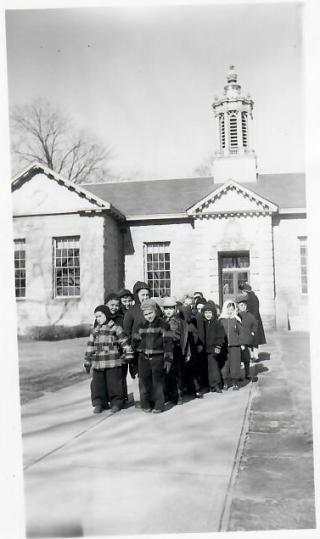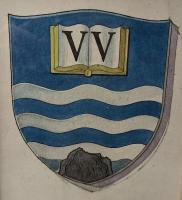History of the Library

Whitinsville Social Library is the public library for the town of Northbridge, Massachusetts. "Social" in the Library name indicates it was originally a subscription or fee based library.
Whitinsville Social Library has its roots in a meeting held in December 1844 to discuss a $100 legacy left by Sarah Fletcher "to take into consideration the establishment of a Social Library." At this time annual membership dues were one dollar and there was an initiation fee of fifty cents.
On February 1, 1876, the Library association "recommended that the free use of the Library be offered to the inhabitants of Northbridge provided the town would annually appropriate the sum of $300, but if the town should at any time cease to make an appropriation, the Library should cease to be a Free Library." In March, the Library, then housed in Memorial Town Hall, was allocated $450 by the town and opened as a free public library. WSL became a "social" library only by name at this time.
In 1913, the present building on Church Street was constructed through the efforts of Edward and Arthur Fletcher Whitin. The brothers sold it to the town of Northbridge for $1.00 in 1917.
In 2015, at the Fall Town Meeting, residents added a bylaw to the town charter stating, "The building located at 17 Church Street in the Village of Whitinsville shown on the Assessor's Map 15A, parcel 135, shall be known only as the "Whitinsville Social Library.""
Income from a private trust fund established by the Whitin family substantially augments annual municipal funding to present day.
Highlights from the past 40 years:
- 1990 - During severe fiscal troubles, the town stopped funding the library. The Library remained open for about 10 hours per week by using funding from the endowment, but lost its state accreditation in the process.
- 1994 - The state accreditation returns when the town began to re-establish funding.
- 1990s - The Library joined CWMARS, the Central and Western Massachusetts Automated Resource Sharing network, as an affiliate library.
- 2001 - The card catalog and circulation were automated.
- Fall 2007 - Due to budgeting issues, the town once again ceased funding the library. All staff members were laid off. The library's board of trustees funded operations for 12 hours a week, supported largely by volunteers.
- January 2008 - WSL lost its state certification.
- February 2010 - WSL was recertified by the state as the town once again funded its library.
- Fall 2010 - Joined CWMARS as a full member and began sharing holdings within the regional online catalog. CWMARS provides the library catalog, database access, and downloadable e-books and e-audiobooks through Overdrive.
- Spring and Summer 2020 - The Library was closed to the public due to the COVID-19 pandemic.
- 2024 - The Library Board of Trustees voted to go late fine free.
Library Building
The present building was built in 1913 from Milford granite, a local stone, in the Georgian Revival style, and is part of the Whitinsville Historic District and included in the National Register of Historic Places. The architect was Richard Clipston Sturgis. The notable woodwork is carved in California redwood. Except for a small addition in the late 1990s for an elevator and handicap accessible public bathroom and the opening of the book stacks to the public, the building is essentially unchanged. Much of the original furnishings also remain.
What follows is the text of a 1913 article in American Architect magazine, published just prior to the opening of the building:
"This is a small library in a small town, to be taken care of most of the time by a single attendant. The reading rooms and delivery room have therefore been designed for inspection from a single point. By making the whole front of the building a single room it was possible to get a room which has the dignity of considerable size, and by the use of the open decorative screens the two ends of the room are given a sense of seclusion from the central delivery space, and yet are entirely open for inspection by the attendant at the delivery seek itself. There is no second floor except over the two small portions at the rear of the front room and to the right and left of the stack, in which the stories are low and there is a second story of study rooms. There is a second story level of stack in the basement, the upper level being that on the level of the first floor. The outside of the building is a local granite, the finish of the reading room is entirely of California redwood. The stack is cast iron, and the uprights of the stack are utilized as supports for the concrete slab which forms the roof."
Library Seal
The library seal carved over the front entrance was designed by Sturgis.

Based on the tradition of heraldy, it shows:
- A black rock on a field of blue and silver wavelike bands which represents the Blackstone River.
- An open book with gold leaves and edges on a plain blue field which represents the Library and education.
- Two V's on the book pages to represent the Library's books. Together they also form a W, to stand for the name Whitin.
Library Artwork By Room
- Tween & Teen Room: Portrait of Paul Whitin (1800-1884); Portrait of Charles Pinckney Whitin (1809-1887); Portrait of Sarah Richardson Chapin Whitin (1810-1891).
- Circulation Area: Bust of John Crane Whitin (1807-1882); Grandfather clock (1857); Portrait of Elizabeth Whitin Keeler.
- Childrens Room: "Girl Feeding Geese in Barnyard" painted by Wilhelm Schutze; "Adoration of the Carrot" painted by Stephen Brown Robie (1988).
- Historical Room: "Cows Coming Home from Pasture" painted by Paul Gottlieg Weber (1872); Portrait of Sarah Elizabeth Pratt Whitin (1836-1917); Town of Whitinsville Map (1879).
- Front Lawn: "Dreams of Tomorrow: A Young Girl" bronze statue by K. Norden.

